Womens Kimono: Everything You Need to Know
Karina Ikedo
Posted on February 21, 2023
Share:
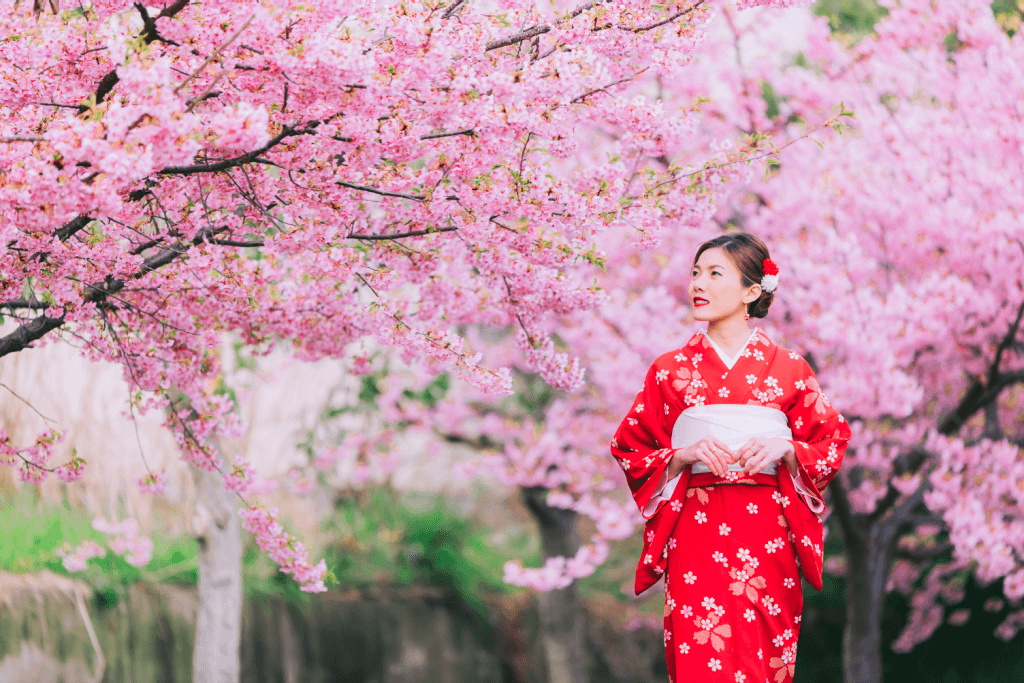
The elegance and style of the kimono, a traditional Japanese garment, have won over people worldwide. It’s a full-length T-shaped robe with long sleeves secured with a decorative belt. Before you choose one, let’s introduce you to kimonos and some of our favorite kimono styles because the world of traditional Japanese clothing is fascinating!
What is the Kimono?
The kimono is Japan’s national garment, derived from the words ki (wear) and mono (thing). It has long sleeves and goes from the shoulders to the heels. Moreover, kimonos come in various styles and patterns depending on the occasion. As noted, kimono robes for casual usage are much simpler than those for formal events. Usually made from four equal pieces of fabric called tans, they are hand-sewn into the shape of a “T” and tied with an obi (belt).
Kimono’s History
Before the Meiji era (second half of the 19th century), everyone, regardless of gender, wore kimonos as everyday clothing. Nevertheless, with the arrival of foreign culture, kimonos started to get out of closets in Japan gradually. However, even though they wore dresses and suits in the city until World War II, Japanese men and women still preferred to dress traditionally at home.
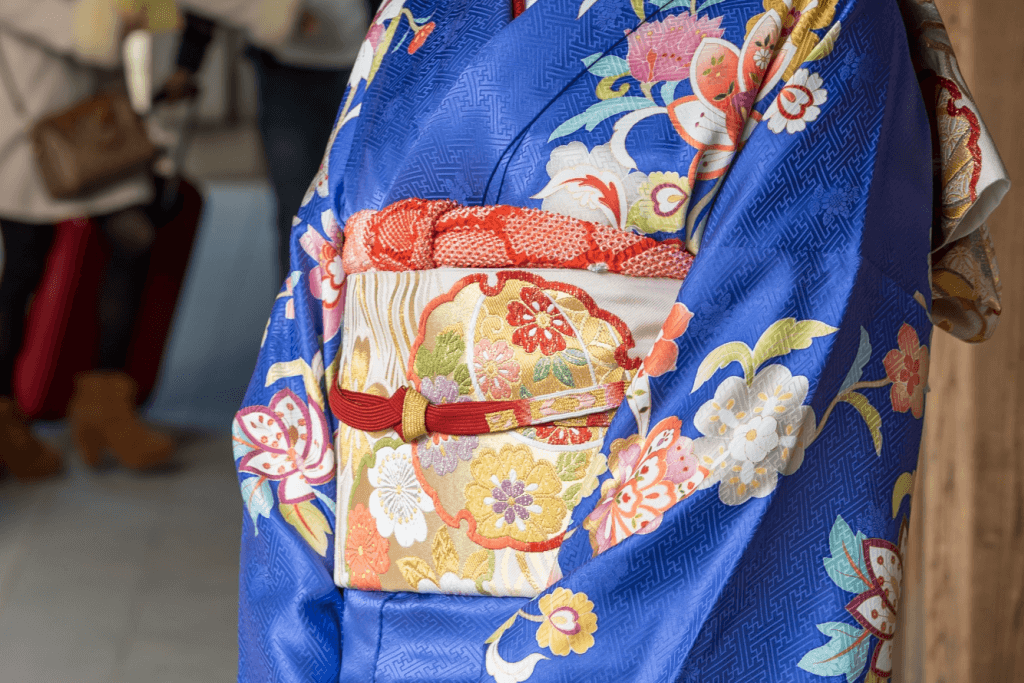
After the war, people no longer wore kimonos casually. Instead, they wore them for formal events like weddings and New Year’s Eve. Many young people today need the help of professionals or special tutorials to properly put on traditional costumes because they cannot quickly put them on their own.
Nevertheless, geisha (art person), kabuki theater actors, tea masters, and other people in traditional occupations still wear kimonos daily. And more fashion enthusiasts are drawing inspiration from it to design their styles.
The Different Layers of a Womens Kimono
Kimonos are especially notable for their many layers. The obi belt, the bottom kimono, the nagajuban, unique laces, and garters are all used to hold everything in place.
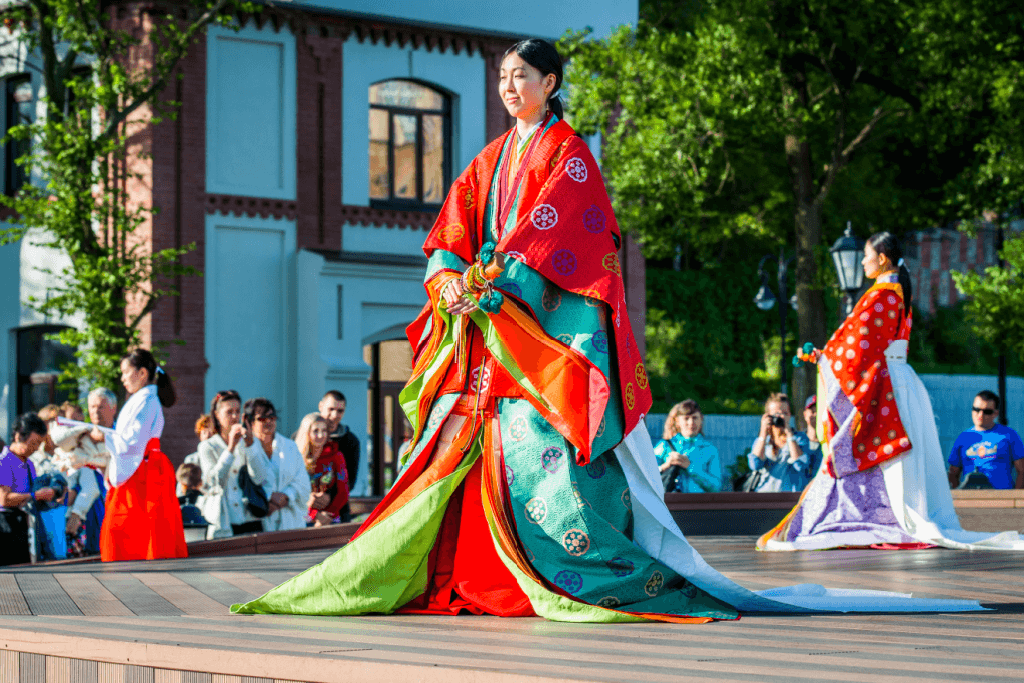
- Nagajuban goes under the main kimono.
- Eri-shin is an insert for the collar.
- Kimono is the main element of the costume.
- Obi is the belt that keeps everything in place. The most popular obis for women’s kimonos are the maru-obi (complete obi) and fukuro-obi (pocket obi). Women frequently decorate the back of their obi to resemble a flower or a butterfly.
- Obi-ita, a plate used to smooth the obi belt’s surface, is inserted in front between the layers.
- Obi-makura, a small cushion with ties, is used to shape obi into the desired shape.
- Obijime, a decorative lace, secures the whole kimono by being tied over the belt.
- Obiage is a small piece of cloth (usually silk) used to drape the upper part of the obi.
- Tabi is the white cotton socks.
- Jori is a traditional Japanese shoe.
Characteristics of a Womens Kimono
Women’s kimonos are frequently colorful, embrace vivid colors like red, pink, and purple, and have nature-related patterns, such as flowers and animals. The patterns and colors of the fabric used to make a kimono have different meanings. For example, red represents youthful glamor, so it suits young women. Bamboo, plum, and pine trees are lucky because they represent renewal, perseverance, and longevity. The crane is a sign of longevity and good fortune.
Types of Womens Kimono
There’re many styles of kimono for women to wear on different occasions; for example, married women and single women should wear different types of kimonos. Let’s take a look at some of the most popular ones!
Uchikake
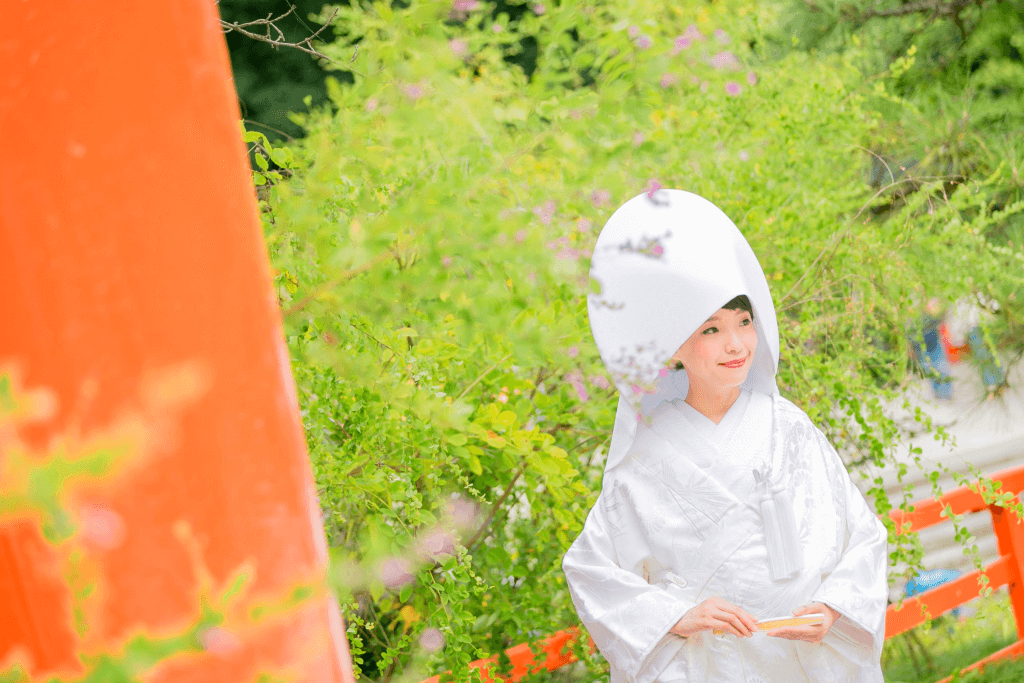
Uchikake is a formal womens kimono exclusively used as bridalwear or for classic theatrical productions like kabuki—the term uchikake only refers to the outer layer of women’s traditional wedding clothing. In addition, this jacket usually has bright red or white as the color palette, symbolizing rebirth as a bride. Another design feature of an uchikake kimono is that it’s usually one size longer than the kimono worn inside to trail along the floor.
Looking to discover more about Japan’s rich culture through its culinary traditions? Check out Sakuraco! Sakuraco delivers traditional Japanese snacks, teas, sweets, and snacks from local Japanese makers directly to your door so you can enjoy the latest treats from Japan!
Shiromuku
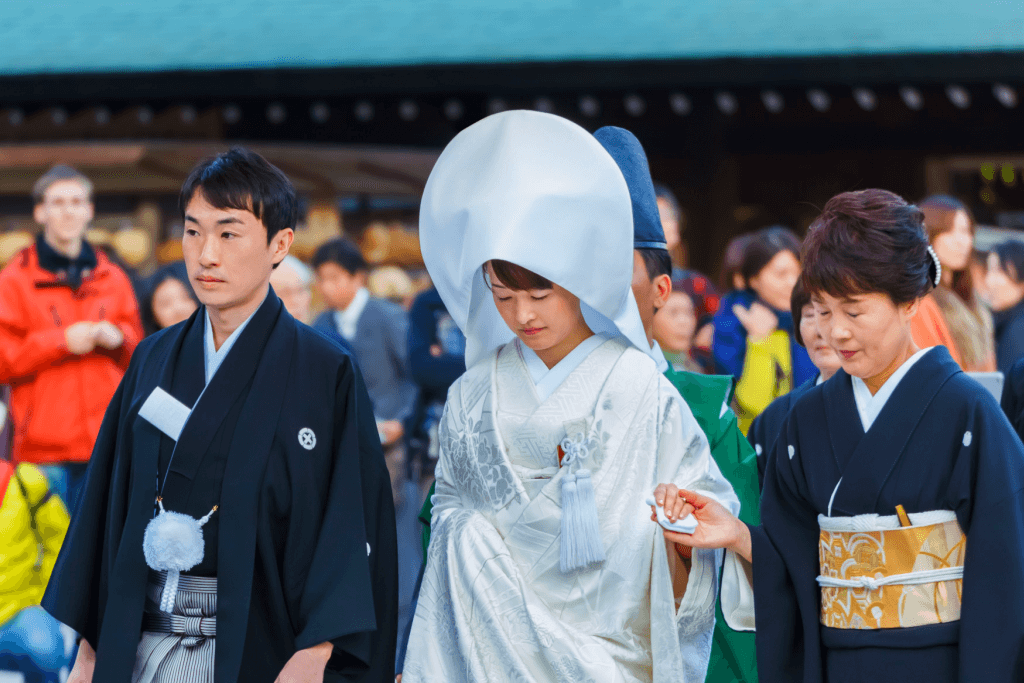
The shiromuku is a bridal womens kimono that is all white. The kimono’s white color originally comes from the era of the samurai. A woman would, at the time, show her submission to the family she was marrying. Because it was white, she could easily blend the family’s colors. There’s little doubt that these kimono styles have a unique place in Japanese culture and history. They also make the stunning bride look even better on her special day.
Furisode
The most formal type of kimono is called a furisode and is for young, usually single, women in Japan. A furisode has long, hanging sleeves, which typically measure between 80 cm and 114 cm in length. Furisode kimonos often have undoubtedly dramatic designs designed to catch the eye.
There are three styles of furisode kimonos, each with a different sleeve length. The most popular and formal kimono style is the ofurisode (large furisode); it has a sleeve length of around 114 cm. It also has some padding, which adds weight and durability. Furisode is one of the most elegant kimono types suitable for formal weddings and performances.
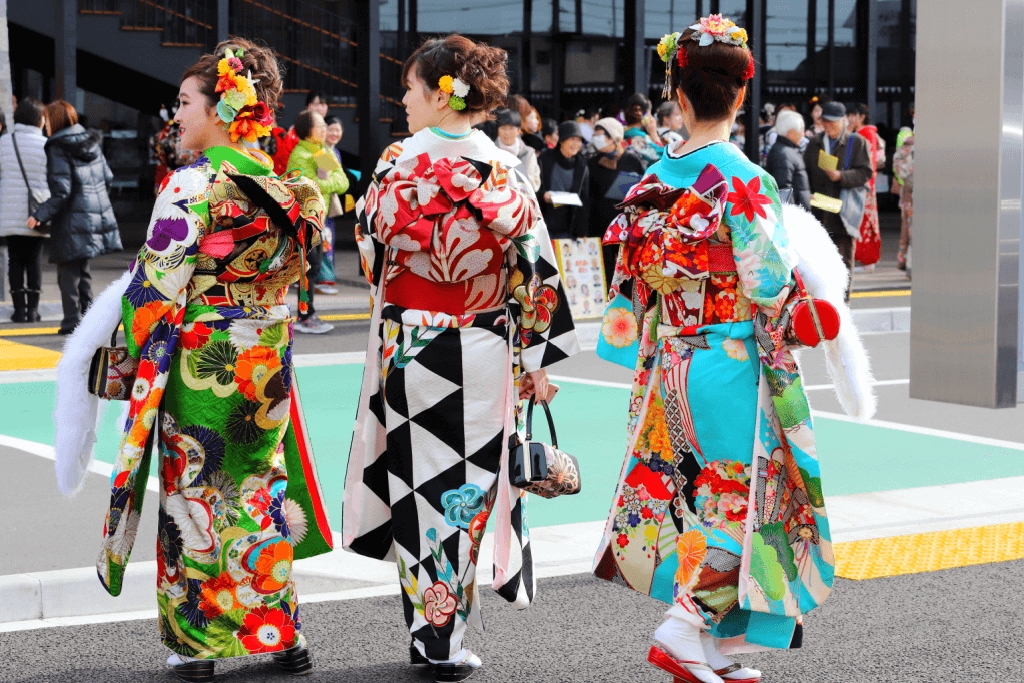
Chufurisode (medium furisode) sleeves typically measure 100 cm in length. Chufurisode has become more popular with young women. They’re more relaxed and lighter as they don’t have any inside padding like the ofurisode.
The sleeves of the kofurisode (small furisode) are around 80 cm long. Hence, kofurisode has the shortest sleeves and pairs with hakama or formal pants. It’s less common than the other furisode kimono types. The look dates back to the Meiji era (1868-1912), especially with the hakama and boots. It was the preferred kimono style at the time among many Japanese schoolgirls.
Tomesode
The most formal kimono style worn by married women is the tomesode. A tomesode features a stunning pattern that is always below the waist. Gold is the most common motif; this kimono style resembles an evening dress in western culture.
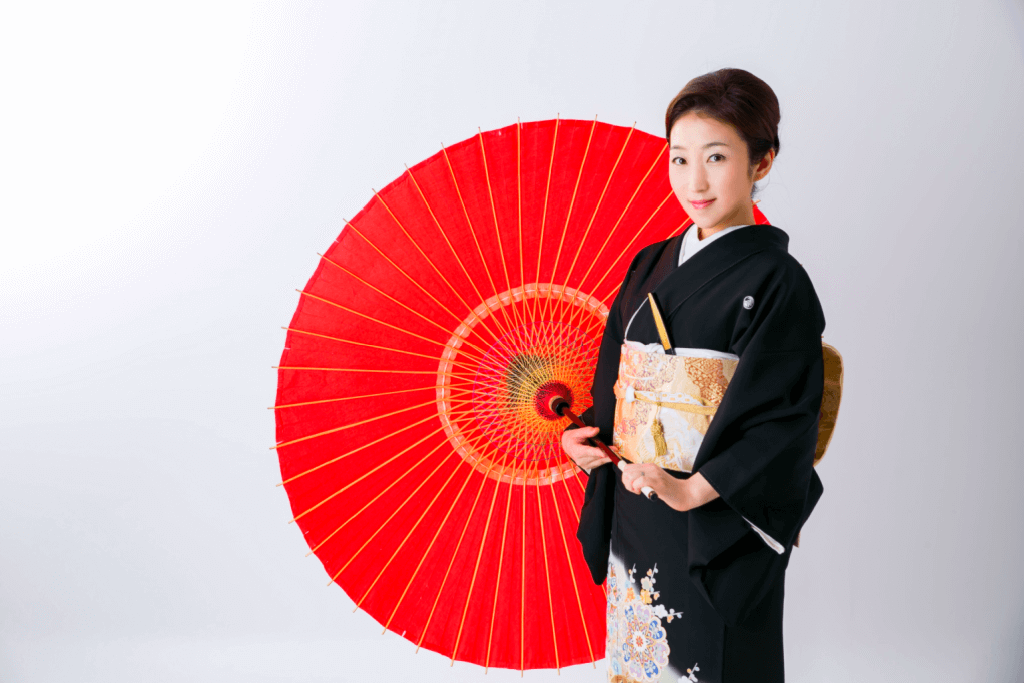
In summary, there are two types of tomesode, kurotomesode (black tomesode) and irotomesode (colored tomesode). Married women only wear kurotomesode, while unmarried women wear irotomesode.

In the Imperial Court, kurotomesode’s black color symboliszes sorrow, so people there don’t wear them. Instead, when someone from the Imperial family wears a tomesode or a commoner visits the Imperial Palace to receive an award or similar honor, they traditionally wear an irotomesode.
Houmongi
Houmongi, or “visiting dress,” is a semi-formal kimono that women wear, regardless of marital status. It’s available in various elegant colors and patterns for several ceremonies and semi-formal house gatherings. In addition, this kimono style uses the “eba” technique, which gives the impression of a single, stretched painting across the entire kimono. Despite having a long history, it was an innovative kimono style when it first appeared during the Taisho period.
Iromuji
An iromuji is a kimono with only one color, not black or white, without designs or dyed patterns. These kimono designs have a simple elegance to them. Since the pattern isn’t flashy, it does not interfere with solemn occasions or bring too much attention to who is wearing it. But that doesn’t mean people exclusively wear them on sad occasions.
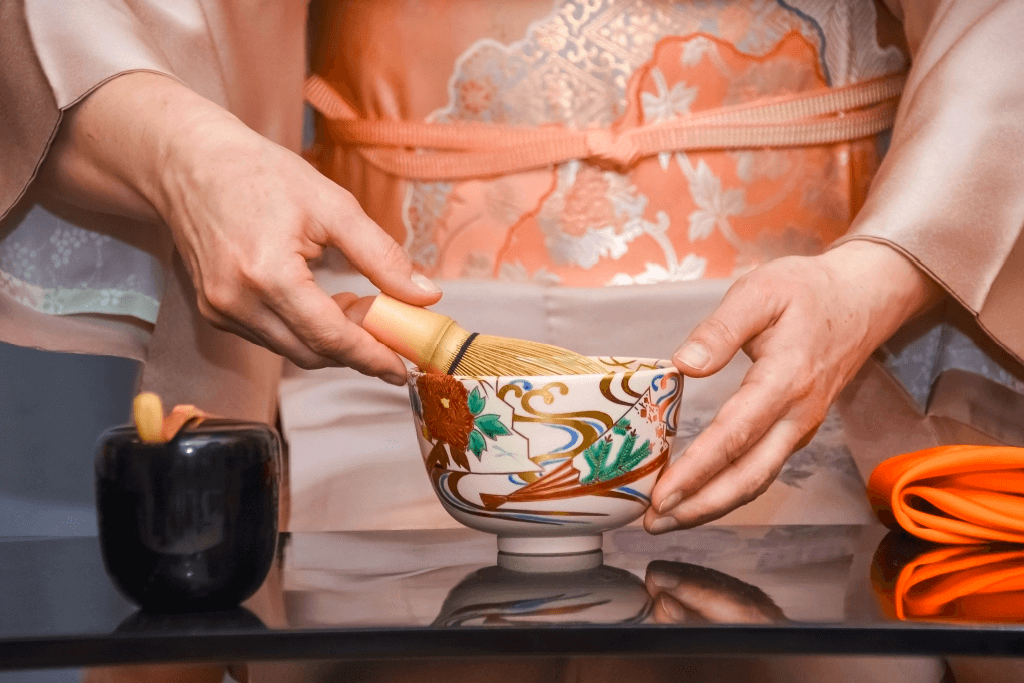
Iromuji is best for family occasions and graduation ceremonies. There is even a particular style of iromuji kimono during a Japanese tea ceremony. The number of crests on the kimono determines how formal they are.
Yukata (Summer Womens Kimono)
Yukata (bath clothing) has short sleeves and is the most casual traditional style. Its fabric is primarily cotton, linen, or hemp for summer wear. People of all genders can sport yukata for various informal events, like a hot spring trip, participating in summer festivals, attending fireworks displays, doing summer activities, or simply strolling around a picturesque Japanese garden.
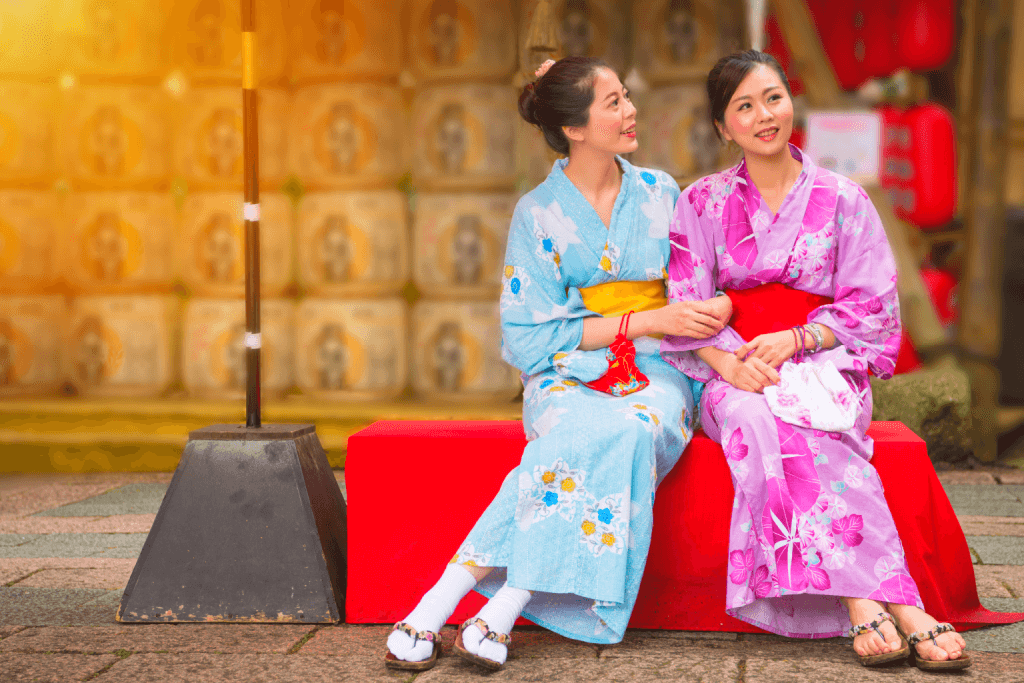
The most well-known outfit worn in Japan is womens kimono. Beautiful patterns and colors adorn traditional kimonos. The Japanese kimono is “wearable art” since it combines many artisans’ techniques. So the kimono is Japan’s most elegant national dress for many reasons, including its stunning silhouette, neatness, and uniqueness.
Have you worn womens kimono before? Which is your favorite type? Let us know in the comments below!

Discover authentic flavors with Sakuraco
Get Sakuraco 

Discover authentic flavors with Sakuraco
Get Sakuraco 
Related Articles

Mount Fuji Snacks That You Need to Try This Summer!
Mount Fuji, Japan’s highest and most iconic peak, has long served as a muse not just for artists and poets, but also for confectioners. Its symmetry and snow-capped grandeur make it an ideal motif for culinary artisans nationwide. These treats capture the spirit of Fuji in edible form, reflecting regional ingredients, seasonal symbolism, and time-honored techniques.

Okinawa City is Home to Southeast Botanical Gardens!
The Southeast Botanical Gardens in Okinawa are one of the island’s most beautiful and relaxing destinations. In Okinawa City, they offer a lush escape filled with tropical plants, ponds, animals, and seasonal displays.

Mount Fuji Tour: Great Adventures Await You This Summer!
Mount Fuji is one of the most famous landmarks in Japan. People worldwide visit to see its beauty and enjoy exciting yearly outdoor activities!

Mikoshi: Why Are These Portable Shrines So Important?
Japan’s summer festivals are known for their energy, color, and tradition. And at the heart of many lies the mikoshi.



